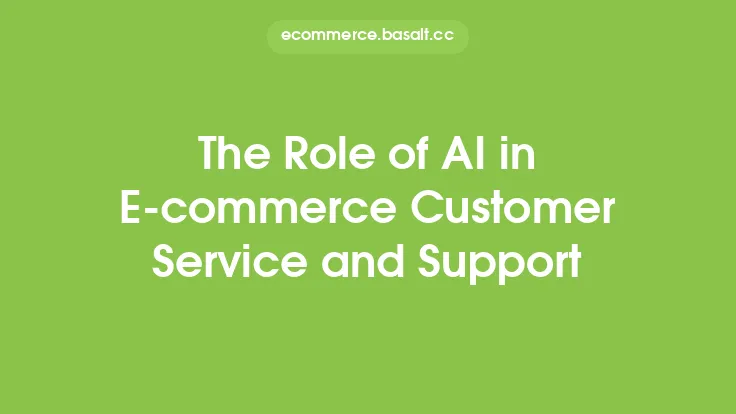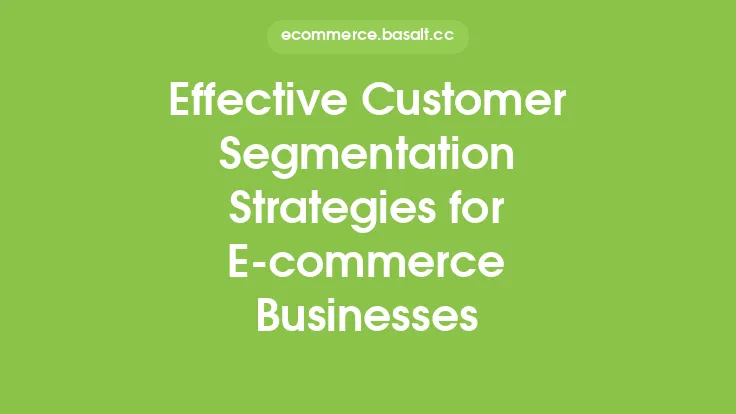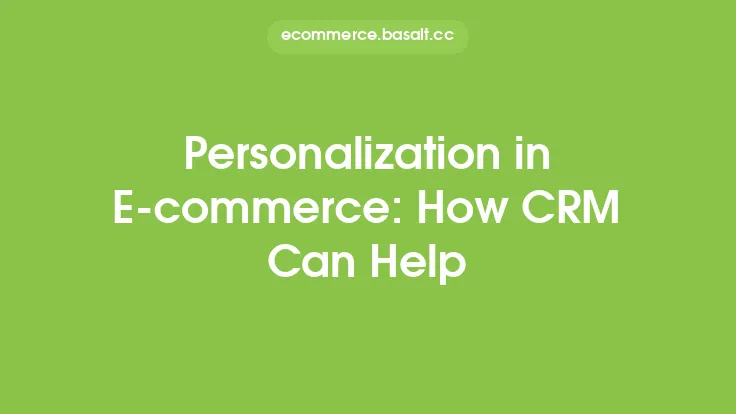In today's competitive e-commerce landscape, providing exceptional customer service is crucial for building loyalty, driving sales, and fostering long-term growth. One key aspect of delivering outstanding customer service is personalization. Personalization in e-commerce customer service involves tailoring interactions to meet the unique needs, preferences, and behaviors of individual customers. This approach not only enhances the customer experience but also sets businesses apart from their competitors. In this article, we will delve into the benefits and strategies of personalization in e-commerce customer service, exploring how it can be leveraged to create a more customer-centric and supportive environment.
Benefits of Personalization in E-commerce Customer Service
Personalization in e-commerce customer service offers a multitude of benefits, ranging from improved customer satisfaction and loyalty to increased efficiency and reduced support costs. When customers feel understood and valued, they are more likely to return to the business, making repeat purchases and recommending the brand to others. Personalization also allows customer service teams to address issues more effectively, as they have a deeper understanding of the customer's history and preferences. This targeted approach can lead to faster resolution times, reducing the overall volume of support requests and enhancing the efficiency of the customer service operation. Furthermore, personalization can be a key differentiator, setting a business apart in a crowded market and contributing to the development of a strong brand identity.
Strategies for Implementing Personalization in E-commerce Customer Service
Implementing personalization in e-commerce customer service requires a combination of technology, data analysis, and strategic planning. One of the first steps is to collect and analyze customer data, including purchase history, browsing behavior, and interaction with customer service. This data can be used to create detailed customer profiles, which serve as the foundation for personalized interactions. Businesses can also leverage customer relationship management (CRM) systems and other tools to manage customer data and automate personalized communications. Another strategy is to use segmentation, dividing customers into groups based on shared characteristics or behaviors and tailoring service approaches accordingly. Additionally, training customer service representatives to be empathetic and understanding, and to use customer data to inform their interactions, is crucial for delivering personalized service.
Role of Technology in Personalization
Technology plays a pivotal role in enabling personalization in e-commerce customer service. Advanced analytics and machine learning algorithms can be used to analyze vast amounts of customer data, identifying patterns and preferences that inform personalized service strategies. Chatbots and virtual assistants, powered by artificial intelligence, can provide immediate, personalized support to customers, helping them navigate websites, track orders, and find products. Moreover, technologies like natural language processing (NLP) and sentiment analysis can help businesses understand customer emotions and concerns, allowing for more empathetic and personalized responses. The integration of these technologies into customer service operations can significantly enhance the personalization of service, making interactions more relevant, timely, and effective.
Measuring the Success of Personalization Efforts
To understand the impact of personalization on e-commerce customer service, businesses must establish clear metrics and benchmarks. Key performance indicators (KPIs) such as customer satisfaction (CSAT) scores, net promoter scores (NPS), and first contact resolution (FCR) rates can provide insights into the effectiveness of personalization strategies. Additionally, metrics like average handling time (AHT) and customer retention rates can help businesses assess the efficiency and long-term value of personalized service. Regular analysis of these metrics, combined with feedback from customers and service representatives, is essential for refining personalization strategies and ensuring they align with customer needs and expectations.
Challenges and Future Directions
While personalization in e-commerce customer service offers numerous benefits, it also presents several challenges. One of the primary concerns is data privacy, as collecting and using customer data must be done in compliance with regulations like GDPR and CCPA. Businesses must also balance personalization with the risk of over-personalization, which can come across as intrusive or spammy. Looking to the future, the integration of emerging technologies like augmented reality (AR) and the Internet of Things (IoT) is expected to further enhance personalization capabilities, offering new channels and methods for delivering tailored customer service. As e-commerce continues to evolve, the ability to adapt and innovate in personalization strategies will be critical for businesses seeking to stay ahead of the competition and meet the ever-changing expectations of their customers.
Conclusion
Personalization in e-commerce customer service is a powerful strategy for building strong, lasting relationships with customers. By leveraging customer data, technology, and strategic planning, businesses can deliver tailored interactions that meet the unique needs and preferences of individual customers. As the e-commerce landscape continues to evolve, the importance of personalization will only continue to grow, making it an essential component of any customer service strategy. By understanding the benefits, strategies, and challenges of personalization, businesses can position themselves for success, fostering loyalty, driving growth, and establishing a competitive edge in the market.





